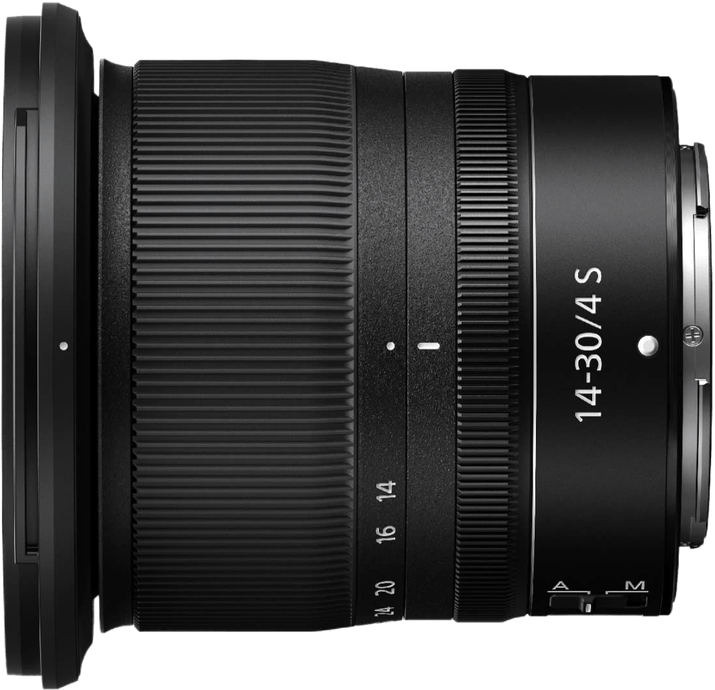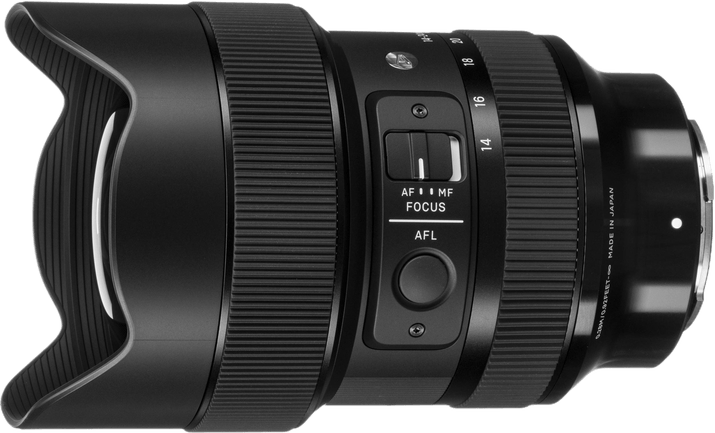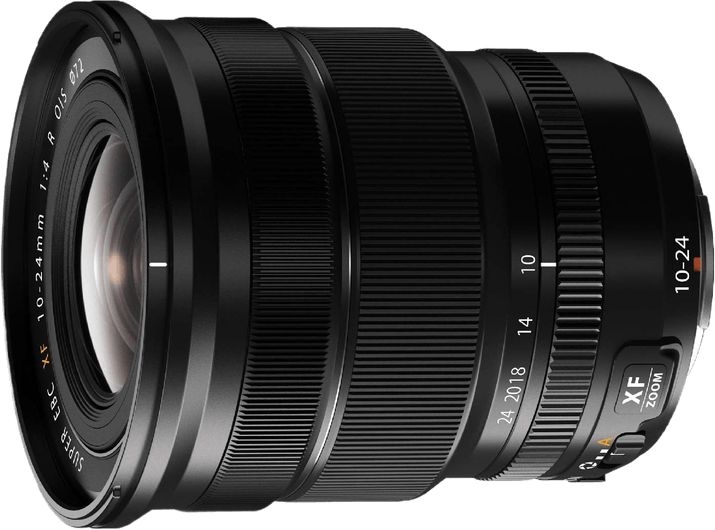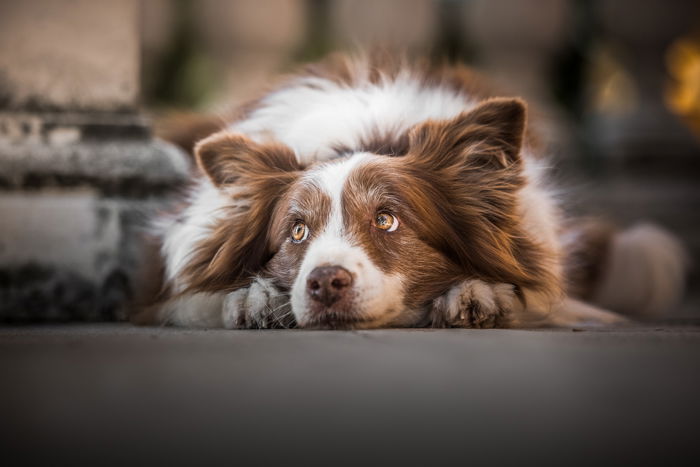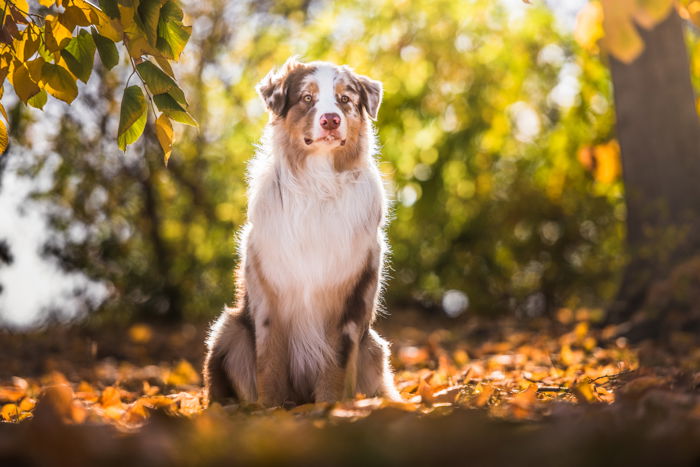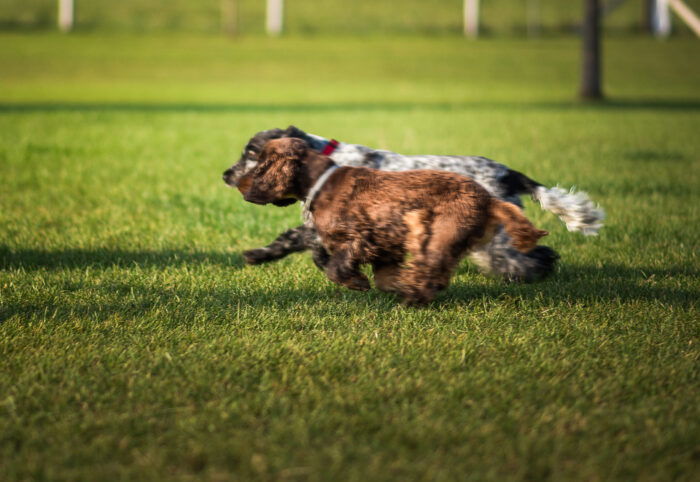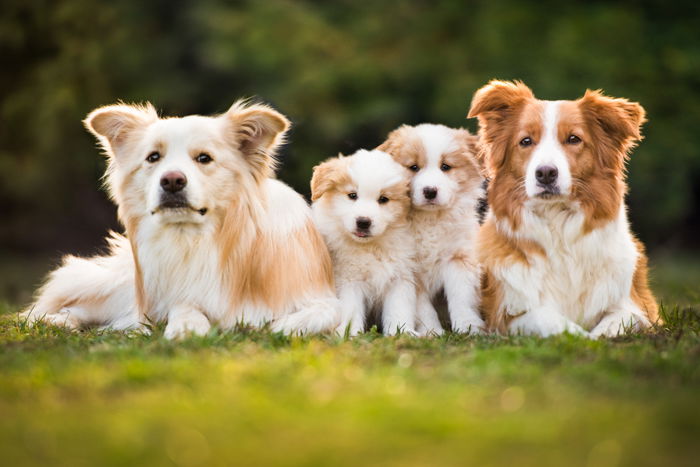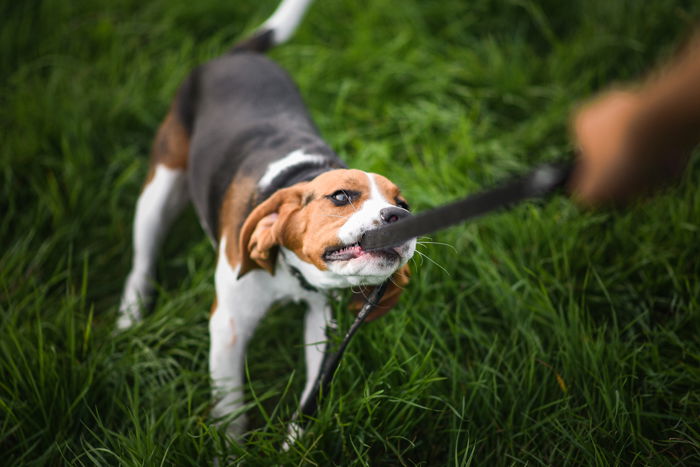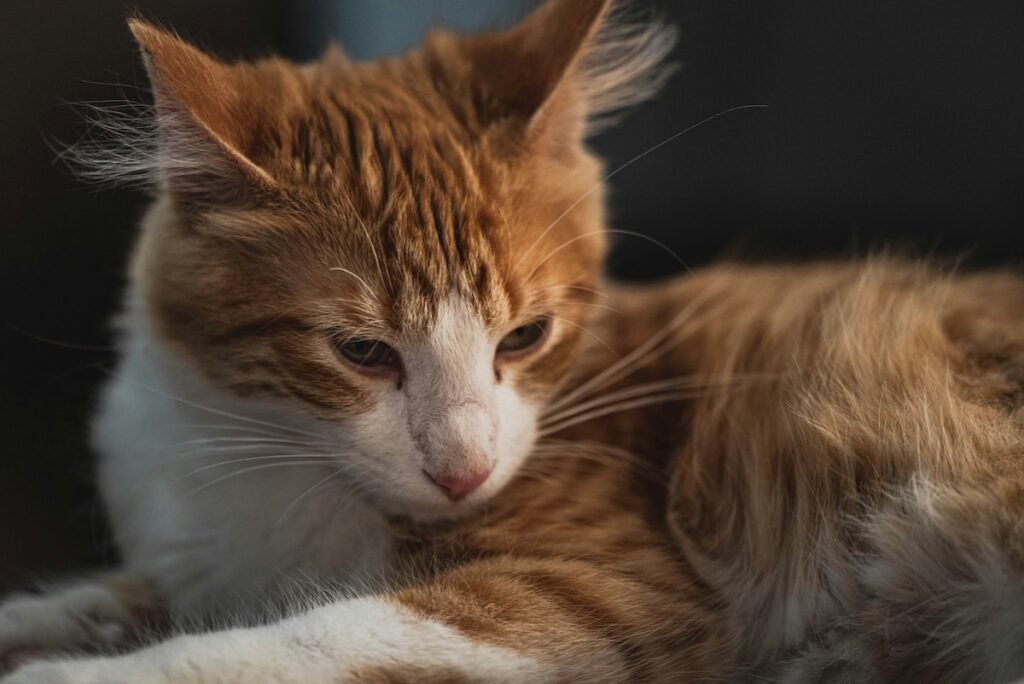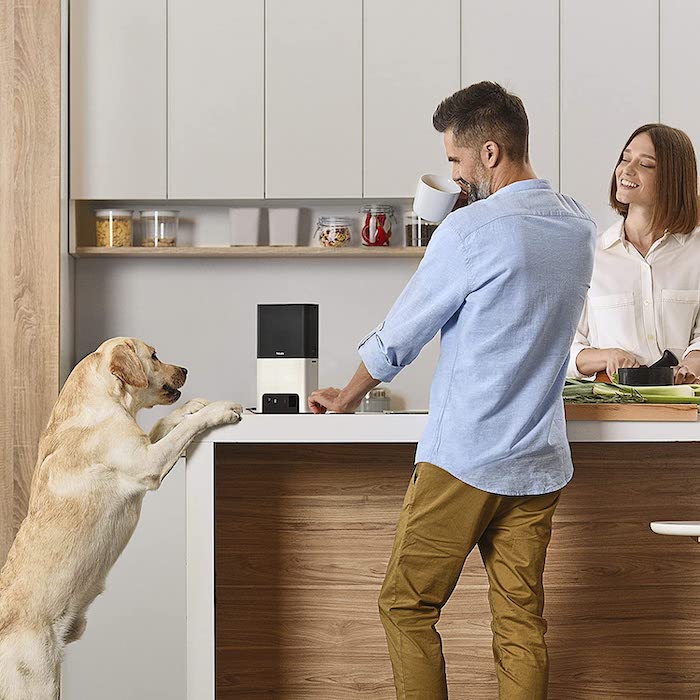Dogs are perfect subjects for pet photography. Their energy, unpredictability, and joy can be turned into eye-catching dog photography.
Top 15 Dog Photography Tips
Here are our top dog photography tips and ideas you can use with your pets. They’ll ensure you’ve got amazing pictures of your furry family members forever!
1. Know the Dog’s Personality
Portrait photographers often get to know their clients before the photo session. By getting a glimpse of their personalities, they better know what to avoid and how to give instructions. The same technique can be used when photographing dogs.
If your pet model is energetic, you can prepare for a fast-paced and unpredictable photo shoot. If it enjoys lazing around, you can bring a few treats to catch its attention.
You can also use this information to inspire yourself. For example, professional travel photographer Theron Humphrey is inspired by his dog’s quirks and habits. Observe your subject and include its strengths in your pictures for the most natural results.
2. Capture Owner-Pet Relationships
If your subject feels uncomfortable in your presence, you can ask the owner to join the picture. Dogs tend to feel most comfortable in the presence of their loved ones.
You can use this opportunity to take heartwarming portraits. If the puppy is yours, don’t be afraid to take some self-portraits!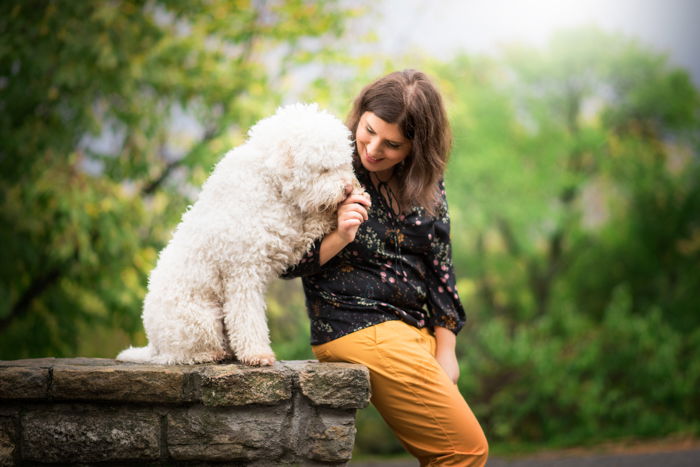
3. Focus on Eyes to Create Depth
Emotive dog portraits focus on the eyes. It is like human portraits. You can use the eyes to create depth, emphasize an unusual eye color, or create a sense of familiarity. Use a wide aperture (f/2.8 or lower) to enhance this feeling!
Often, your subject won’t start posing as soon as you pick up your camera. I recommend taking emotive dog portraits at the end of your photoshoot. That’s when your puppy has used all its energy and is ready to relax.
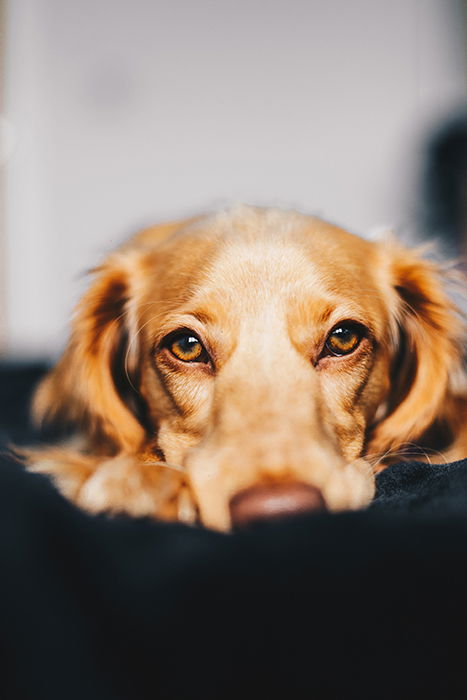
4. Use a Black Background for Classic Portraits
Not every dog portrait has to be taken outdoors. If you’re a fan of studio photography, you can create a backdrop using a few simple tools. All you need is black paint, cardboard, and lighting equipment (DIY or professional).
A black background puts the spotlight on your subject. It creates the illusion of depth. And it makes your photos look like professional fine art prints.
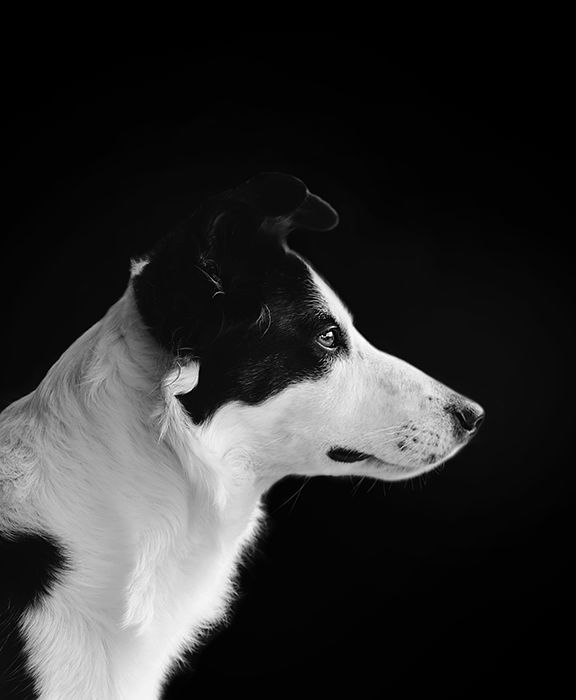
5. Take Photos Using Burst Mode to Capture Motion
Continuous shooting (burst mode) is perfect for taking epic and hilarious photos of dogs. But active dogs are unpredictable, so you won’t be able to compose a shot during your session.
Instead of waiting for the perfect moment, take spontaneous images. Burst mode is a handy feature that lets you take many pictures within seconds. You can capture various camera angles and expressions while your dog is on the move.
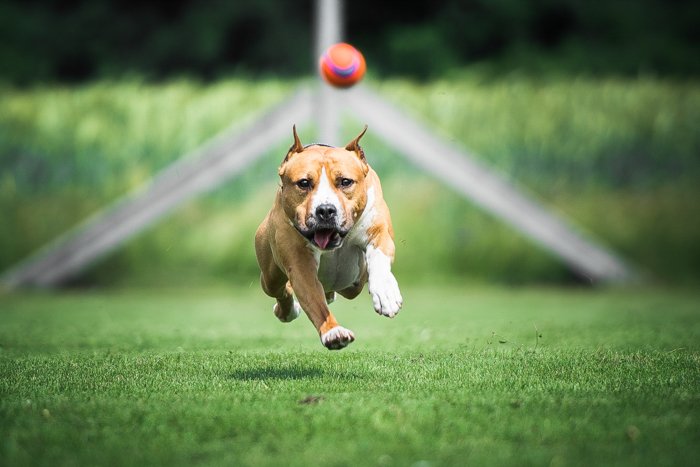
6. Use a Wide-Angle Lens for Fun Portraits
Wide-angle lenses have short focal lengths. This lets you create wide compositions. You can use them to create funny and unusual pictures of your pet. Here are a few wide-angle lenses that we recommend for dog photography:
- Canon RF 15-35mm F/2.8L IS USM
- Nikon Z 14-30mm F/4 S
- Sigma 14-24mm F/2.8 DG DN Art for Sony E Mount
- Fujifilm XF 10-24mm F/4 R OIS WR
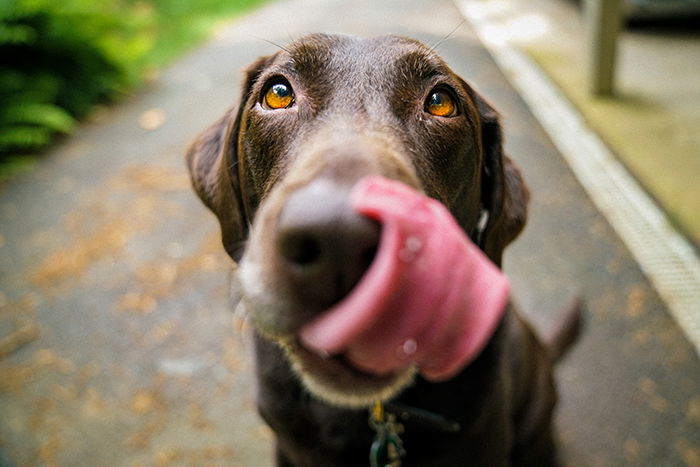
7. Use Manual Focus for Sharp Portraits
In pet photography, autofocus isn’t always the solution. When your dog rests or walks calmly, you can use manual focus to take sharp portraits. This technique allows you to focus on the right parts of the dog’s face.
Shoot in manual mode if you want to control your pictures fully. Other modes, like aperture priority, do some work for you. This might quicken the shooting process, but it might not give you the results you want. Manual mode is best!
8. Use Natural Light for Striking Pet Portraits
Natural light is the most accessible and helpful tool you’ll ever have as a photographer. Thanks to its ever-changing nature, you can use it to take all kinds of striking pup portraits.
Here are some of the best times to take beautiful pet photography:
- Golden Hour: Shortly after sunrise or before sunset, the sun creates a hazy, golden atmosphere ideal for joyful photos.
- Cloudy Day: Clouds won’t help you take bright photos. But they’ll create a pleasant glow. This helps you take well-lit photos no matter where your pet goes.
Try to avoid harsh, direct light as much as possible. Midday light creates unflattering shadows and makes you (and your dog!) squint.
9. Distract Untrained Dogs for an Easier Shoot
Some dogs seem to have an endless amount of energy. This might make your photoshoot more challenging. You can try to distract them from their adventures using these handy objects:
- Their favorite dog treats
- Squeaky toys
- Their owner’s encouragement
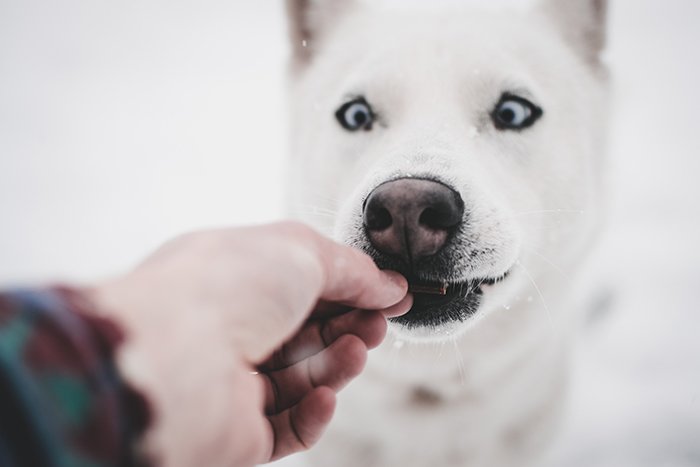
You can even take pictures while someone rewards the dog with treats.
10. Use the Panning Technique for Creative Dog Photos
The panning technique is often used to emphasize movement and create textures. If you like abstract photography, you’ll enjoy this creative approach to dog photography.
To be successful, you need to predict where your puppy will run. When ready, point your camera toward your pet as it moves and press the shutter.
It’s best to try to master this technique before the photoshoot. You can practice by photographing moving vehicles or wild animals.
11. Use a Reflector to Eliminate Shadows
If you’re working in a studio, you might find it difficult to lighten every aspect of your puppy’s features. The popular side-light technique, often used for portraits, doesn’t always look flattering in dog photography.
Aim to cast an even amount of light on your entire subject. This helps make their eyes sparkle.
To do this, use a reflector. You can buy one or make one at home. You may even already have one! A large white paper sheet or tin foil can easily replace a professional reflector. It also helps to have an assistant who can help you hold the reflector.
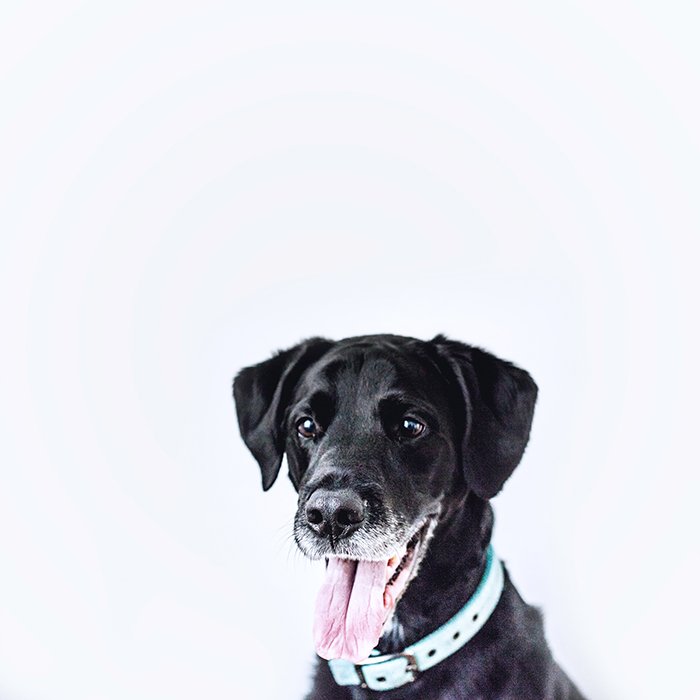
12. Get Down to the Dog’s Eye Level to Calm Them
There’s nothing wrong with taking photos of dogs from unusual angles. But it’s important to get on their level for some shots.
This makes your pet feel more comfortable and encourages you to experiment with new angles. Shooting from the puppy’s eye level gets you the cutest pictures.
To take this tip to the next level, photograph your dog playing, running, or resting. You’ll have unique photos that you and your clients will love!
13. Find Inspiration in Natural Poses
Every pet has its quirks. Instead of forcing your pet to pose for you, find inspiration in its natural poses. Knowing your pup’s personality before the photoshoot greatly helps your dog photography.
14. Zoom In to Give the Dog Space
It’s important to give your subject enough space to feel comfortable. This is especially true if it’s not your puppy. A dog is more inclined to play with the right amount of space.
They’ll probably forget that the camera is even there. But they may not if you’re standing close and staring at it through a lens.
A zoom lens helps you take high-quality photos of your subject from a distance. This helps the puppy get used to your presence. And it gives you enough space to experiment. You can try different compositions, crop out distractions, and create gorgeous bokeh.
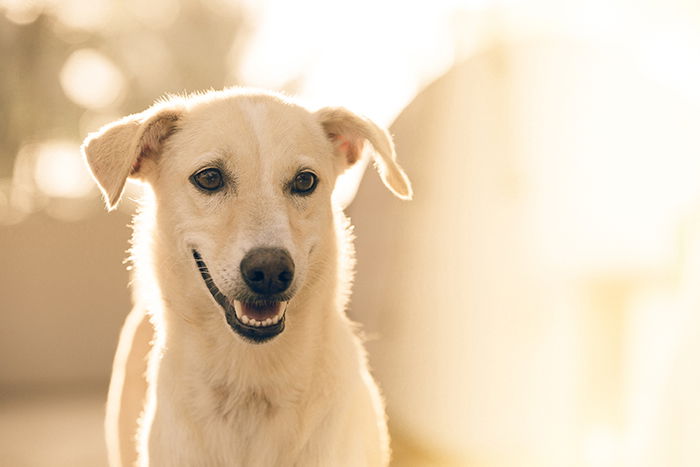
15. Start With Action Shots
Even though dogs can be unpredictable, you can still plan your photoshoot to make the most of your time. Once you are familiar with your subject’s personality, you’ll know how and when to take specific photos.
Shooting strategically helps you avoid unnecessary stress and makes you a better planner.
For example, if your dog is very active, you should focus on taking action shots. At the beginning of your session, use the panning technique. Remember to use Continuous Focus mode to get sharp results.
After they settle down, you can switch to manual focus and take classic dog portraits. During breaks, you can reward your dog with treats and take beautiful close-ups.
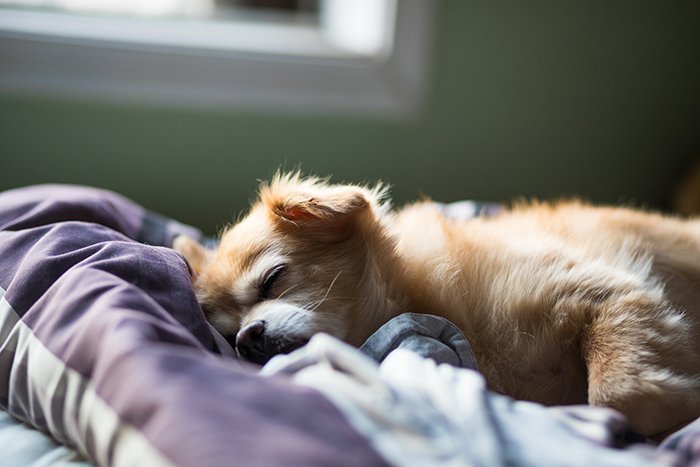
Conclusion: Dog Photography Tips
Every dog lover deserves to have great dog photos. You can learn how to work with different dog personalities with some practice. Master how to shoot strategically and adapt to various pet camera settings. You’ll become a skilled dog photographer in no time.
Use these pet photography tips even if you’re not planning to become a pro. They can help you take the best possible photos of your beloved pet.
Check out our Perfect Pawtraits e-book to take amazing photos of your beloved pets!

